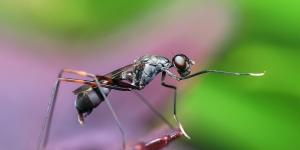Animals Without a Central Nervous System

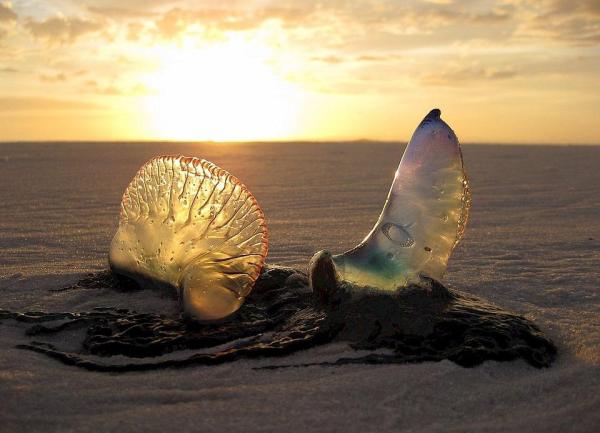
Animals without brains are those which don't need them. Although our human brain is a vital organ which is necessary for our continued survival, not all organisms have this type of central nervous system. The purpose of the nervous system is to send signals from the brain to other parts of the body. These signals help the organism to function by controlling movement, providing appropriate responses to stimuli and ensuring the vital organs are functioning properly. This is a complex system which needs to be controlled by the brain. Less complex organisms have different needs, but they still need to be controlled even if they don't have a brain.
At AnimalWised we look at examples of animals without a central nervous system. We detail what sort of nervous system these animals have in order to survive, as well as provide photos of what they look like.
What is the central nervous system?
The central nervous system is one of the two subdivisions of the nervous system, the other being the peripheral nervous system. Overall the nervous system is responsible for a multitude of tasks, such as controlling all vital the functions of organs and tissues in the body. The central nervous system is made up of the brain and the spinal cord.
The brain is found inside the skull in vertebrates and in the most anterior part of the body in other invertebrate animals. Sometimes known as the encephalon, the brain is made up of different parts. The cerebrum controls memory and learning. The cerebellum is in charge of the motor functions of the body. The brainstem is in charge of heart rate, breathing and other primary functions. A series of nervous move from the brainstem down the vertebrae to control other organs and tissues.
As we can see, the brain helps an organism to survive. Despite this, animals without brains survive and thrive, sometimes in the harshest of environments. We explain more about how animals without brains function.
How do animals without brains function?
One of the main characteristics of most animals have is locomotion, i.e. the ability to move. For this ability to exist there must be a set of nerve cells or another system that allows them to react to the stimuli that occur in the environment. These are connected via the brain and the rest of the central nervous system.
Some of the animals without brains are sessile. This means they do not need to move independently, but have adapted in such a way they can survive without doing so. Some animals without brains can move, despite their limited nervous system. They are organisms which have a simpler structure, but can carry out various behaviors which ensure the survival of their species.
Generally speaking, animals without brains function by having a more basic nervous system than other animals. Although some of these animals lack a true brain, they have other structures which allow them to control movement and other vital functions.
We look at specific examples of animals without a brain in the sections below:
Sea sponges
These animals do not have any type of proper tissue. This includes tissues of the nervous, digestive or respiratory systems. Instead of a central nervous system, sea sponges have several cell types with specific functions. The physical anatomy of sea sponges includes the following:
- Pinacocytes: cells that line the body, there is no communication between the cells.
- Choanocytes : flagellated cells responsible for digestion.
- Mesohyl: an extracellular space between the layer of pinacocytes and choanocytes. Within this matrix are the rudimentary skeleton of sponges and other lesser-known cell types.
Adult sea sponges do not move so they don't require a central nervous system. Their own cells detect changes in the environment and reorganize themselves based on the stimuli presented to them.
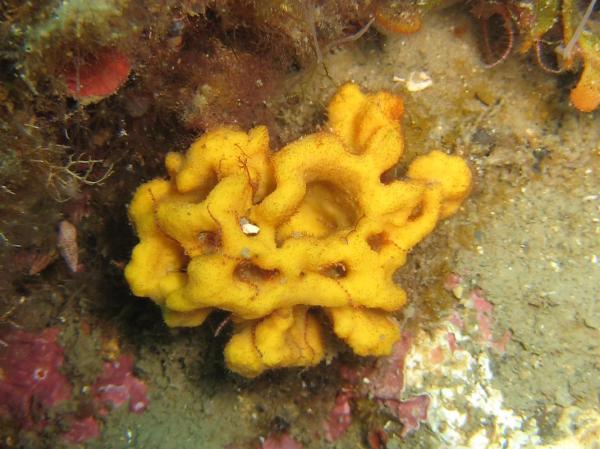
Jellyfish
Despite not having a brain, jellyfish are able to move. This may lead some to wonder do jellyfish have a central nervous system? Jellyfish do not have a central nervous system because they do not have a centralized brain connected to the rest of the nervous system.
Jellyfish do have a type of nervous system. In this case, jellyfish have a net of nerves which is made up of a ring system. Their nervous tissue is made up of a set of sensory cells that are embedded in the epidermis and gastrodermis. This tissue lines the gastrovascular cavity which is the equivalent of a stomach in jellyfish. These sensory cells are in communication with muscle cells and will inform the animal if there is any danger nearby, a food source or any other change in the environment.
Although they can move, jellyfish cannot move well. This limited nervous system only allows for basic movements. Generally, they can move up and down the water column by pulsing their body. However, they cannot move laterally on their own, doing so by relying on water currents.
Despite their simplified body structures, jellyfish can carry put all the basic behaviors needed for survival. Learn more with our article on how jellyfish are born.
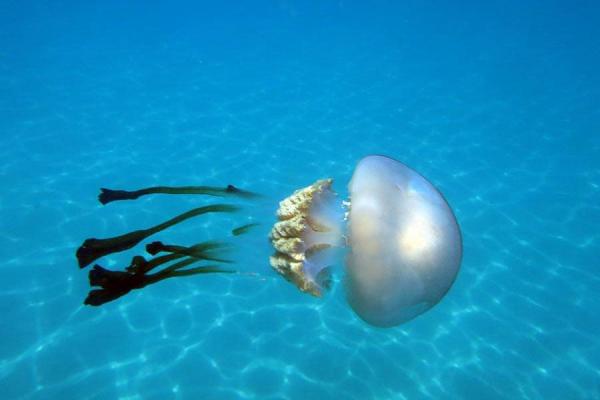
Acoelomates
Acoelomates are a group of very rudimentary animals. They are defined by not having a fluid-filled body cavity, something which means they are very vulnerable to external forces. This does not mean they will always be this way. There is some evidence to suggest there is some level of cephalization in acoelomates[1], i.e. the evolutionary process by which the sensory organs agglutinate at one pole of the body.
These animals are visually very similar to a worm or slug. They have a nerve ring at one of the poles of their body, branching into eight longitudinal nerves to the body. In addition, rudimentary eyes called ocelli appear for the first time in these animals.
Some examples of acoelomates without a central nervous system include:
- Flatworms
- Hairybellies
- Jaw worms
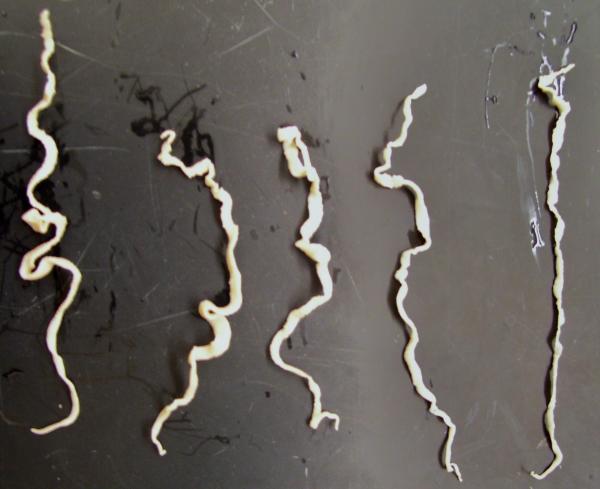
Turbellarians
Turbellarians belong to the flatworm phylum Platyhelminthes. In this group of animals, the cephalization process is seen even more clearly, but it is very far from what is presented by more evolutionarily developed animals such as vertebrates.
The nervous system model is very basic. It doesn't have a true brain, but it has a subepidermal organ in the shape of a ring with nerve cords that extend throughout the body. These can be in one or several pairs depending on the species. Although it has a more concentrated part (cephalization), it is still a diffuse set of nerve cells that run through the body.

Annelids
The defining characteristic of these animals is that their body is divided into metameres or segments. Its nervous system is organized in such a way that we find a primitive brain in the segment corresponding to the head, from which two ventral nerve cords emerge. These form a nerve ganglion in each segment. Ganglia are collections of nerve cells.
We have been learning about various animals without a central nervous system. Take a look at our related article to discover which animals do not have hair.
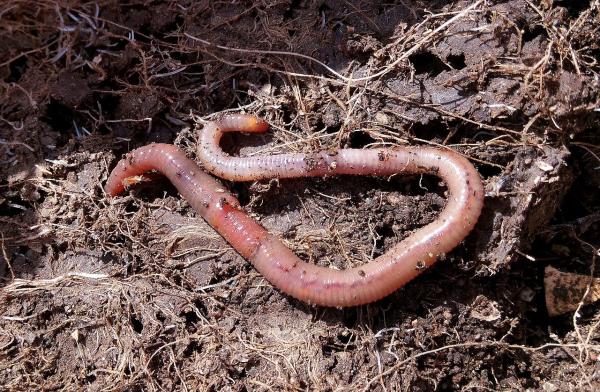
Mollusks
It is in this group that we find the inflection point between primitive and more developed nervous systems. Mollusks have a proper cephalic area with a brain, mouth and sensory organs.
They have a periesophageal ring and two pairs of nerves (tetraneuro), two pedals (locomotor) and two visceral (digestive, reproductive, etc.). In less active animals, such as bivalves (clams), it is poorly developed. In snails, octopuses, cuttlefish and squid it is highly developed, with additional ganglia in the more active ones.
For all these reasons, we could say that mollusks do have a central nervous system when we are talking about gastropods and cephalopods. Even so, these are somewhat lower level of development than more complicated animals such as fish or mammals.
Learn about how these animals survive with our article on how do mollusks reproduce?

If you want to read similar articles to Animals Without a Central Nervous System, we recommend you visit our Facts about the animal kingdom category.
1. Jezkova, T., & Wiens, J. J. (2017). What Explains Patterns of Diversification and Richness among Animal Phyla?. The American naturalist, 189(3), 201–212.
https://doi.org/10.1086/690194
- Avelina Tortosa i Moreno. NERVOUS SYSTEM: ANATOMY. Official College of Nurses and Nurses of Barcelona.
- Hickman Jr, C. P. (2009). Integral principles of zoology (No. 591 HICp 14th ed.).
- Thibodeau, G. A., & Patton, K. T. (1995). Anatomy and physiology. Mosby-Doyma Books.


